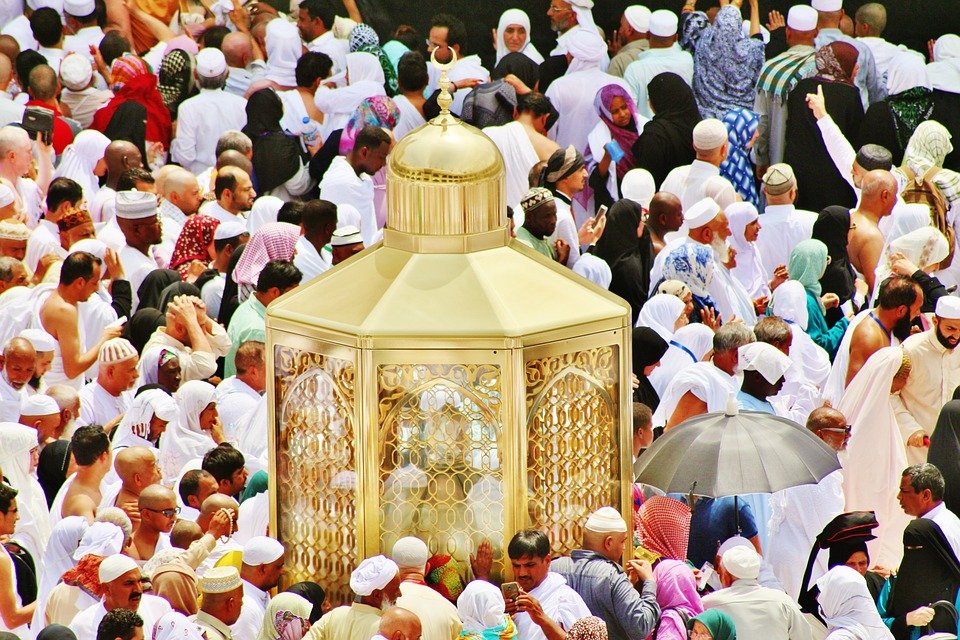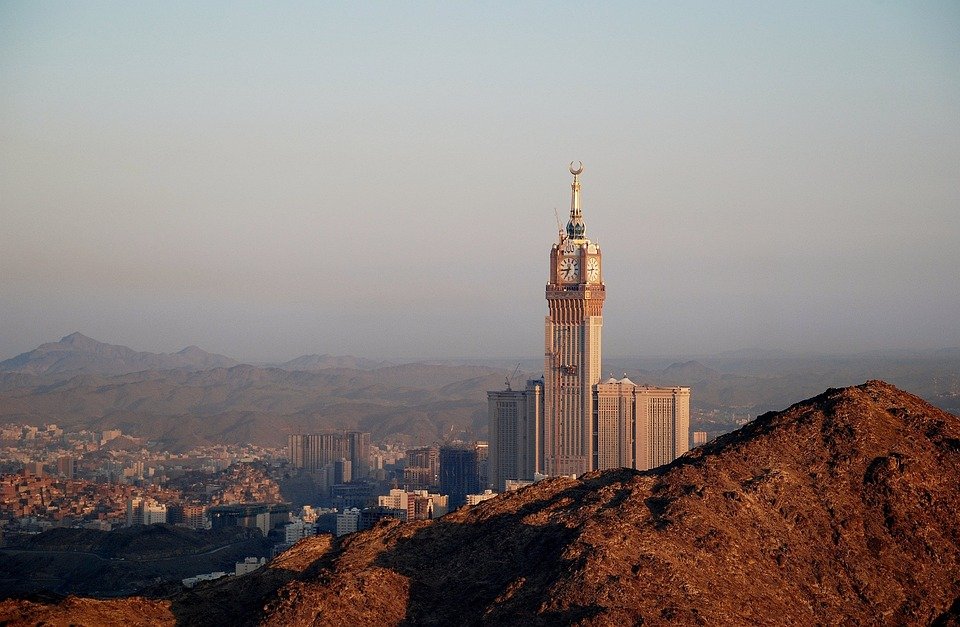You are here to read: Where Did Hajj Come From: Exploring Its Historical Roots – A Thoughtfully Written Guide Offering Spiritual Wisdom and Travel Advice for Every Pilgrim who is going on holy journey of Hajj or Umrah.
In this article, we will explore “where did Hajj come from” and provide you with a comprehensive understanding of its origins. Hajj, the sacred pilgrimage to Mecca, has deep-rooted historical significance that dates back centuries. I believe that gaining insight into where Hajj originated enhances our appreciation of this important Islamic practice. As you read on, I promise you will find a proper guide to this topic, allowing you to connect more meaningfully with the rituals and traditions associated with Hajj.
Understanding where Hajj came from holds great importance for Muslims around the world. It highlights the spiritual journey that millions undertake each year and reinforces our understanding of faith. In my opinion, the historical roots of Hajj give it a profound significance, reminding us of the sacrifices and lessons passed down through generations. At Airlink Hajj and Umrah, we pride ourselves on our expertise, bringing nine years of experience in Makkah and Madinah travel since 2016. We are dedicated to providing you with accurate and insightful information on “Where Did Hajj Come From: Exploring Its Historical Roots.” Join us as we unfold the story behind this revered pilgrimage.
Where Did Hajj Come From: Exploring Its Historical Roots
The Origins of Hajj
Hajj is more than just a pilgrimage; it is a profound spiritual journey for millions of Muslims. The roots of Hajj date back to the time of Prophet Ibrahim (Abraham), who lived thousands of years ago. According to tradition, Ibrahim received a divine command to take his wife Hajar and their son Ismail to a barren land. That land was the site of what would later become Makkah. In my opinion, the story of Ibrahim’s sacrifice shows us the importance of faith and obedience to God.
The Kaaba, a cube-shaped building at the center of Makkah, holds special significance. It is believed that Ibrahim and Ismail built it as a house of worship. Over centuries, this site attracted many followers who came to honor the one true God. As we reflect on these historical roots, it becomes easier to see why Hajj is such a vital ritual today. It represents unity, faith, and a profound sense of purpose.
The Influence of Pre-Islamic Traditions
Before the advent of Islam, the Arabian Peninsula had rich traditions and customs. Various tribes held festivals and engaged in acts of worship. Some would visit the Kaaba, honoring their local deities. The people revered Makkah as a sanctuary, where disputes ceased, and peace reigned. I think this cultural backdrop helped shape the Islamic Hajj tradition.
With the arrival of Prophet Muhammad in the 7th century, many of these pre-Islamic customs were reformed. Muhammad emphasized the worship of one God and guided people to eliminate idol worship. The Kaaba continued to be a focal point, but the rituals took on new meaning. In my opinion, this evolution demonstrates how history can influence modern practices in profound ways. It reminds us that faith adapts and grows while maintaining core values.
The Significance of the Kaaba
The Kaaba stands as a symbol of unity for Muslims worldwide. It signifies the direction of prayer (Qibla) for over a billion people. When pilgrims circle the Kaaba during Hajj, they’re not just performing a ritual; they are expressing their devotion and commitment to God. I find it fascinating how this simple structure transcends time and space, drawing people together in worship.
You're at the middle of this awesome post at AirlinkHajjandUmrah.com through: Where Did Hajj Come From: Exploring Its Historical Roots. Keep reading, it gets better!
Throughout history, the Kaaba has undergone transformations and restorations. Each change tells a story of resilience and faith. Today, as pilgrims approach the Kaaba, they often feel a sense of connection—not just with history but with millions who have come before them. This feeling of oneness is powerful, and I believe it offers valuable lessons about community and belonging.
The Rituals of Hajj
Engaging in Hajj involves several rituals, each with deep historical roots. The Tawaf, or circumambulation of the Kaaba, represents the unity of believers in worship. In my perspective, it symbolizes our collective journey toward spiritual enlightenment. As we circle the Kaaba, we reflect on our life choices and commitments.
Another essential ritual is the standing at Arafat. Pilgrims gather to pray and seek forgiveness. This is a moment of reflection and spiritual awakening. It’s fascinating how such rituals encourage individuals to ponder their path in life and their connection to God. I feel that through these acts, we embrace a journey of personal and communal growth that binds us to our shared history.
The Evolution of Hajj Over Time
Hajj has evolved significantly from its origins to the modern day. Originally, it was a series of rituals performed by a select few. Over time, it transformed into a collective pilgrimage, open to those who could make the journey. As resources increased and transportation improved, the number of pilgrims grew tremendously. In my opinion, this shift reflects humanity’s desire to connect with their faith on a deeper level.
Historically, challenges arose, including wars and natural disasters, impacting the pilgrimage. Yet, the spirit of Hajj endured. Today, millions gather in Makkah, showcasing unprecedented diversity. Being part of such a global congregation is inspiring. It reaffirms the belief that regardless of our backgrounds, we share a common goal: to seek closeness to God.
The Role of Hajj in the Islamic Faith
Hajj holds immense importance in Islam. It is one of the Five Pillars, essential for understanding the faith. As followers of Islam, we believe that performing Hajj at least once in a lifetime is a profound act of devotion, given the ability to do so. I think it’s remarkable how this one ritual encapsulates the core tenets of the faith: submission, unity, and worship.
Each aspect of Hajj serves a purpose. Whether it’s the rituals performed, the prayers recited, or the lessons learned, each contributes to our spiritual development. I feel that Hajj emphasizes the importance of humility and devotion, urging us to reflect on our lives. It invites us to return to our daily lives rejuvenated, carrying the essence of these teachings with us.
Conclusion: A Journey Through Time
Understanding where Hajj comes from enriches our experience of it. The historical roots reveal a tapestry of faith, devotion, and perseverance woven through centuries. I believe that by appreciating these origins, we deepen our connection not just to Hajj itself but to the wider Muslim community.
As we participate in this sacred act, we honor the legacy of those who walked this path before us. In exploring its history, we recognize the intertwining of faith and humanity—a shared journey echoing through time. With each ritual performed, we continue to write our own stories within this ancient framework, building upon those who have preceded us.
In my opinion, this makes Hajj not just a personal pilgrimage but a timeless journey of the spirit, inviting all of us to find meaning in unity, faith, and devotion.
That wraps up Where Did Hajj Come From: Exploring Its Historical Roots. Thanks for sticking with us till here! Share this: Where Did Hajj Come From: Exploring Its Historical Roots with your friends.
Check our homepage at Air Link Hajj & Umrah for more awesome updates.
Some interesting posts are: 1: Umrah Mubarak, 2: When is Umrah closed 2026?, 3: When does Umrah start after Hajj 2026?
Mushu, an experienced Saudi Arabia traveler and writer, shares insightful tips and spiritual reflections to enhance Hajj and Umrah journeys for fellow pilgrims. He has been to Makkah and Madina from 2016 to 2023 many times and his posts will reflect this.







